-

Technology: DAW Bundles
Mike Lawson | October 18, 2014Hardware & software kits for school music educators
The term “Digital Audio Workstation” (DAW) refers to an electronic setup for recording, editing, and producing audio files. You might think of it as a complete recording studio connected to a computer or tablet. These workstations often bundle hardware with software that may have a published curriculum including lesson plans designed to work right out of the box. Here’s what a basic DAW might include:
- DAW Software (Magix Music Maker, Studio One, Pro Tools, Logic, and so on)
- Notation Software (such as Notion, Sibelius, Finale, or Encore)
- Audio Interface (AudioBox USB, M-Box, MicU Solo, Scarlett) Read More...
-
Technology: Digital Audio Workstations
Mike Lawson | January 21, 2014Web-based apps for the music classroom
In a previous edition of SBO, Dr. Jay Dorfman wrote about the growth of cloud-based computing and its impact on education. This model of computing leverages access to networks (both local and internet) for most, if not all, activities that a user may do on his or her computer. Very little is actually stored on the user’s computer. Instead, applications and documents are accessed from remote servers. The netbooks (i.e. Google Chrome) are a good example of this new trend. It’s almost as if we’ve come full circle from the early 1970s when mainframe computers handled tasks sent from “terminals,” primitive keyboard and printer devices. Of course, today we have media-rich experiences with images, audio, and video at our beck and call, which can be invaluable resources for the music classroom.
Read More...
Warning: Undefined variable $additional_loop in /home/sbomagazine/public_html/site/wp-content/themes/timeless2021/archive.php on line 103
Warning: Attempt to read property "max_num_pages" on null in /home/sbomagazine/public_html/site/wp-content/themes/timeless2021/archive.php on line 103


 The term “Digital Audio Workstation” (DAW) refers to an electronic setup for recording, editing, and producing audio files. You might think of it as a complete recording studio connected to a computer or tablet. These workstations often bundle hardware with software that may have a published curriculum including lesson plans designed to work right out of the box. Here’s what a basic DAW might include:
The term “Digital Audio Workstation” (DAW) refers to an electronic setup for recording, editing, and producing audio files. You might think of it as a complete recording studio connected to a computer or tablet. These workstations often bundle hardware with software that may have a published curriculum including lesson plans designed to work right out of the box. Here’s what a basic DAW might include:






